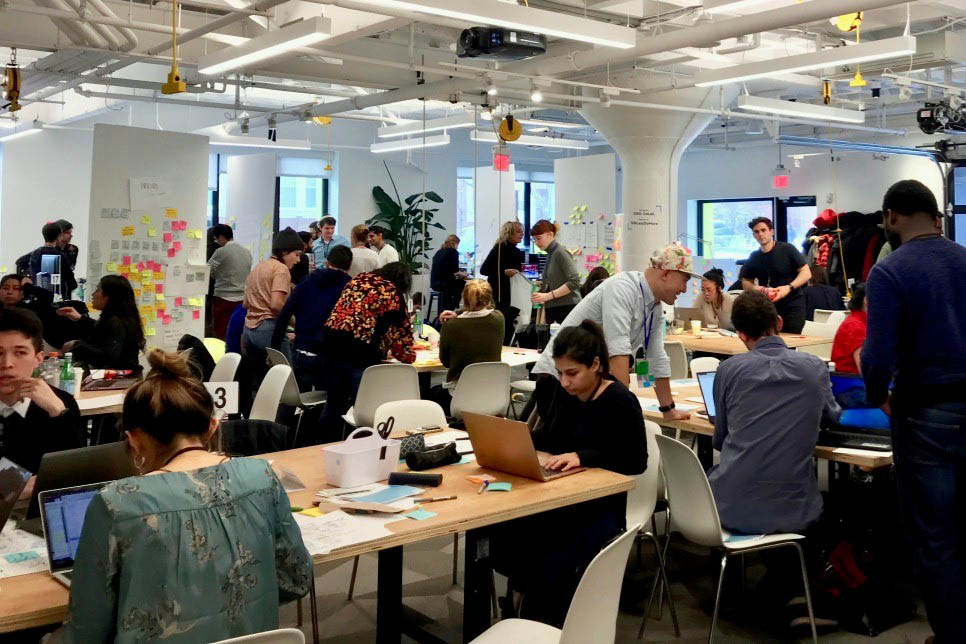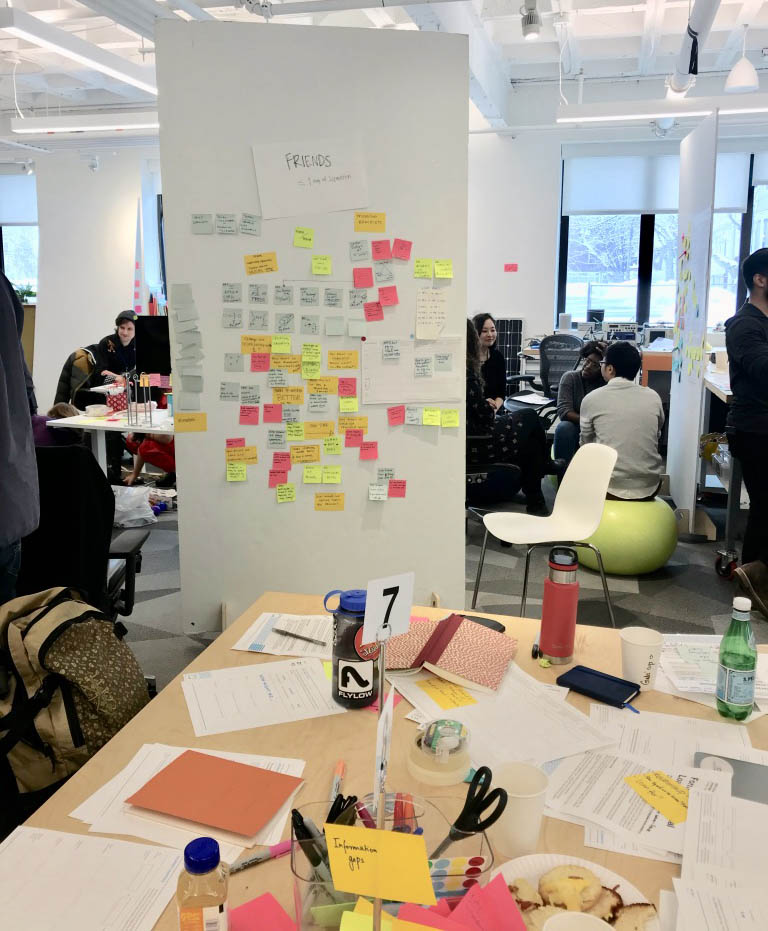Duke Daytime MBA Student Blog

Design Thinking Beyond Fuqua: 3 Takeaways from IDEO’s CoLab Makeathon
Serving on the cabinet of the Design & Innovation Club is one of my favorite extra-curricular activities at Fuqua. Guiding my classmates through design thinking workshops is extremely rewarding, and has given me the chance to hone my own design skills as well

Serving on the cabinet of the Design & Innovation Club is one of my favorite extra-curricular activities at Fuqua. Guiding my classmates through design thinking workshops is extremely rewarding, and has given me the chance to hone my own design skills as well. The opportunities I’ve had through the Design & Innovation Club prepared me to represent Fuqua earlier this year at IDEO CoLab’s Spring 2019 Makeathon in Cambridge, Massachusetts.
The Makeathon was a full day of mini design sprints focused on emerging technologies. Participants spent the day prototyping solutions for challenges related to the future of work, financial inclusion, the circular economy, and other future-focused topics. There were lots of Post-its. There were lots of buzzwords. There were also a lot of great questions, surprising insights, and provocative prototypes. I left feeling inspired and optimistic about the future that we have the power to build.
Here are a few main reflections that I took away from my day at CoLab.
1. Prototypes can help you explore alternate realities.
At the start of the Makeathon, all 64 participants were divided into teams of four. Each team was given a problem statement and was tasked with designing a solution to their problem. Seven hours later, each team had built a scrappy-yet-functioning prototype of their solution using a combination of code, cardboard, circuit boards, and whatever other materials they found laying around the lab.
The idea of rapid prototyping is one of the cornerstones of IDEO’s methodology. The basic notion is that, by turning a rough idea into an even rougher tangible artifact, you can get new insights by watching people interact with the prototype and by interacting with it yourself. You can then build these insights into future iterations of the product.
The Makeathon put the value of this idea on full display. At the start of the day, the CoLab team showed off one of their recent prototypes: a blockchain-enabled firearm dubbed “The Glockchain”. If you’re rolling your eyes at this, I think that’s kind of the point. As understood by the CoLab team, prototypes are provocations. They’re intended to make you take a potentially outlandish idea seriously, to consider the implications, and to ask questions that you may not otherwise have asked.
The concept of prototype-as-provocation expanded my understanding of what prototypes are for and when they’re useful. Prototypes can be about testing solutions, but they can also be about inspiring questions. They can be tools of exploration, not just tools of refinement. Prototypes allow you to hold a little bit of alternate reality in your hand and to experience what the world might feel like under a different set of rules. And then, if that new world feels right, they can help you get started on building it.
2. Diversity is essential to designing a future that works for everyone.
The Makeathon was something of a diversity paradox. On the one hand, the variety of cultural and professional backgrounds represented in the room was staggering. My fellow participants hailed from China, Mexico, India, Italy, Singapore, the U.K., and elsewhere. They worked in fields as varied as architecture, politics, computer science, extreme sports, fine art, education, and neuroscience. This was a serious asset when it came to designing our solutions. We all benefited from the outside-the-box ideas that occur when you smash different backgrounds and disciplines together in unexpected ways.
On the other hand, it was impossible not to notice that almost every person in the room traveled to Cambridge directly from an elite American university—nearly all from the east coast, mostly from New England. Inevitably, an event like the Makeathon will only be as diverse as the elite institutions that it sources from. And these institutions are still hardly representative of the global population.
My team experienced this fact as a practical impediment. As we worked to design a better process for making salary decisions, we found ourselves asking whether the solutions we were throwing around would be applicable to blue-collar workers. Or, for that matter, anyone who didn’t spend the bulk of their workday behind a computer. We couldn’t answer these questions.
But the elite nature of the Makeathon also gets at a deeper problem, an uncomfortable truth that has no easy answers: the future is always being designed by the elites. And too often, it’s designed by the elites, for the elites.
Here, IDEO’s human-centered approach to future design offers a ray of hope. What we weren’t able to do during the short 7-hour timeframe of the Makeathon—empathize with the people who would be affected by the system we were designing—is actually the cornerstone of IDEO’s practice. IDEO provides an example of an elite institution aspiring to design a future that works for humanity at large.
The lesson from the Makeathon was clear: diversity is critical not just for generating paradigm-shifting ideas, but for ensuring that those ideas serve the best interests of the many rather than just the few.

3. The design thinking process really works.
Imagine you were asked to sit at a table with three strangers and come up with a totally original, commercially viable venture concept—in just seven hours. This sounds miserable and fruitless even to me, a self-avowed idealist who loves dreaming of new ideas.
IDEO has managed to craft a process that makes such an endeavor both productive and fun. Beginning with nothing more than a bare-bones problem statement, my team designed and built a functioning prototype for a product that none of us had previously imagined. A product targeted at an industry that none of us were experts in. A product that, in my opinion, has a pretty great shot at commercial success.
This didn’t happen by chance. It’s the outcome of a process that’s been honed over the past 2-plus decades. Many steps in this process have become familiar in modern tech-driven workplaces: user personas, journey maps, “how might we…” statements, divergent/convergent brainstorming, etc. But seeing the process executed so elegantly by so many people in such a concentrated amount of time and space was genuinely magnificent.
When all was said and done, the Makeathon lasted for just over seven hours. But my experience there will inform my approach to innovation for years to come. And it was an excellent complement to the design thinking skills at Fuqua that I’m building through my classes and the Design & Innovation Club.



